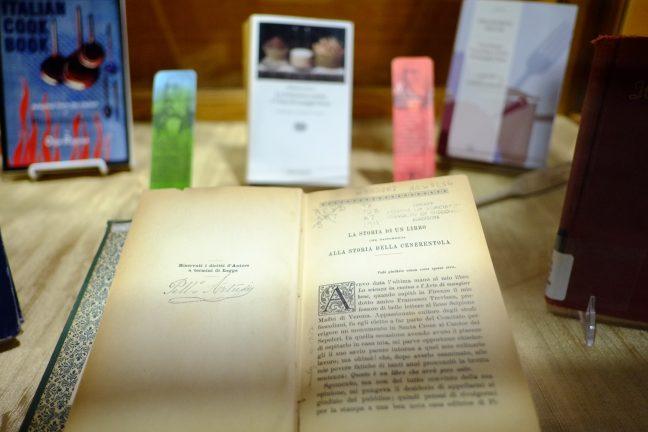In tribute to the famous book “Science in the Kitchen and the Art of Eating Well” by Italian businessman and author Pellegrino Artusi, Memorial Library will host an art exhibition until April 24 commemorating the work of Artusi in a series of 12 art panels.
The book features Italian recipes with a twist. Each recipe tells a story associated specifically with it. The cookbook doesn’t use exact measurements for ingredients — something not typically found in a cookbook. Everything is written “quanto basta,” or as-needed.

The featured cookbook was originally published during a time of political division in Italy. After the Italian unification in 1861, Artusi self-published his book 30 years later in 1891. At the time, publishers weren’t interested in Artusi’s book because they were searching for novel Italian recipes. Artusi was searching for homestyle recipes every Italian could become familiar with. By writing about recipes that were near and dear to Italians’ hearts, his book became an act further unifying Italy.
Grazia Menechella is an associate professor of Italian at the University of Wisconsin, and she set up the exhibition. Menechella called Artusi the first food blogger of Italy, and she described his writing as primarily targeting urban, middle-class Italian women.
“[Artusi] knew that the cookbooks at the time were not really practical manuals because the writing was really complex. He wrote it in — let’s call it ‘spoken Italian,’” Menechela said.
As a businessman, Artusi traveled frequently, and he realized the same dish could have different names throughout Italy, Menechella said. She said Artusi was giving tribute to “cucina domestica,” or “home cooking,” which everyone could relate to.
To make the cut, his recipes needed to include fresh, local and seasonal ingredients. They also included ingredients used by the lower classes — those available to everyone. For example, garlic and couscous are staples in his writing.
“He’s not interested in the recipes of the chefs,” Menechella said. “He’s interested in collecting the recipes of home cooking … He’s kind of democratic and inclusive.”
By having a dialogue associated with his recipes, he was able to better connect with his readers and make his book more appealing. Artusi also wanted to open up readers’ perspective by integrating foreign recipes into his book. Foreign dishes like German cake or French béchamel were published in the first edition.
In the 1940 translation of his cookbook, the foreign dishes were eliminated. This was the first published version of the book that was translated to English. The edits to the book took out most of the stories, too, which left just the recipes. Menechella said this took away from the main purpose of the book.
“What really makes this book so enjoyable to this day … is because it’s really storytelling with recipes,” Menechella said.
As the popularity of the book grew, people started writing to Artusi to have him publish their recipes in his cookbook.
The book is still widely popular today, Menechella said. The recipes are still appealing to Italians and people outside of Italy because of the wide variety of recipes it holds.
“It’s witty and funny,” Menechella said. “[The book] illustrates the most important cookbook in the history of Italian culture and how food is really key in any culture.”
Menechella hopes the 12 panels, which give information on the book and details Artusi’s life, will engage the public. She said the exhibit is right at the opening of the library, so she hopes it’s welcoming. The library also gives the opportunity for the public to look at books related to Artusi and other Italian books about tradition.


